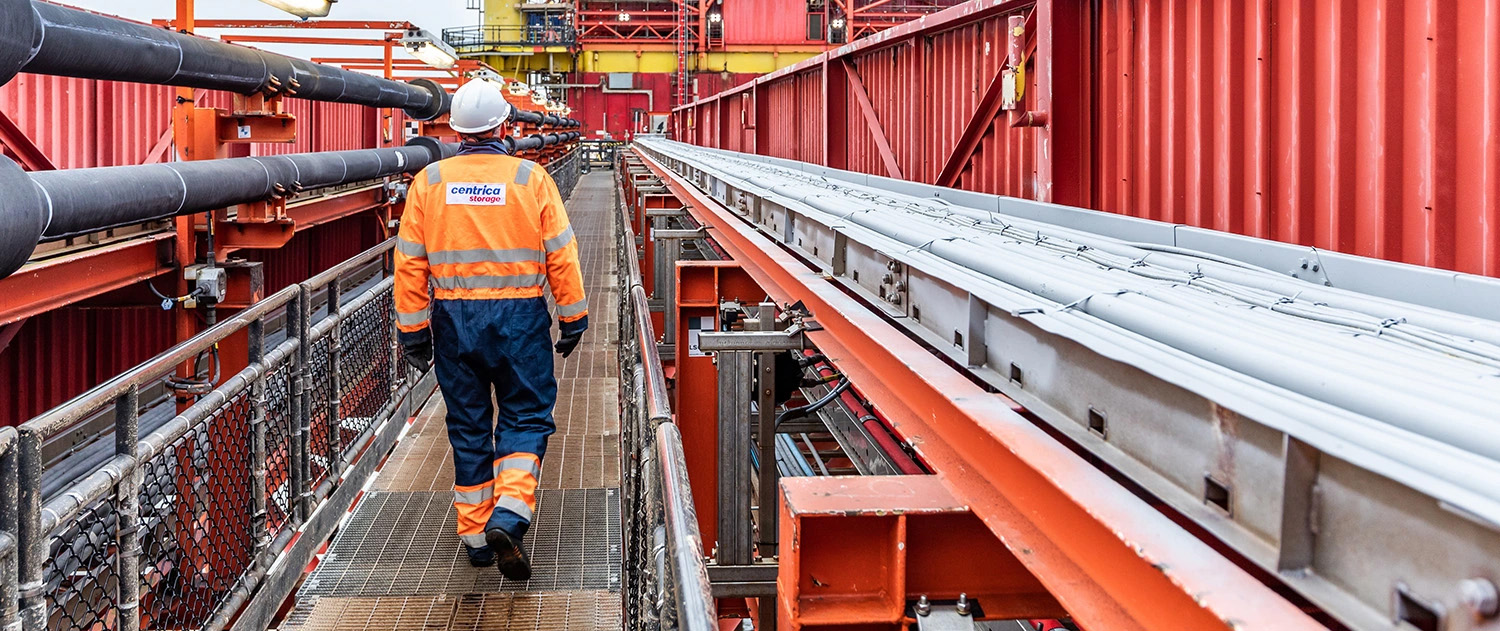Overview
The UK is increasingly reliant on imported gas and now imports well over half of all gas used in the UK.
The UK also has some of the lowest gas storage capacity in Europe at 12 days average, or 7.5 peak winter days. In comparison:
Gas storage capacity in Europe (days)
12
UK
89
Germany
103
France
123
Netherlands
As well as helping to enhance the UK’s energy security, gas storage also provides security of price, helping to protect
consumers from large price spikes.
As we look to add more renewables to our energy mix, greater gas storage capacity will be needed, to ensure
that we have electricity when the wind doesn’t blow, and the sun doesn’t shine. Today we use methane to generate
dispatchable electricity, but in the future, we will use hydrogen. Gas will still be required to provide vital flexibility
and security in our energy system and hydrogen is a sustainable option for the future.
As a country surrounded by depleted gas reservoirs, there is a strategic opportunity for the UK to capitalise on its
gas infrastructure to become a world leader in hydrogen, creating high-skilled, well-paid jobs in the process.
Hydrogen
Hydrogen will be critical to improving the UK’s energy security as we transition to net zero and look to deliver clean power by 2030. Hydrogen will help decarbonise sectors that cannot be easily electrified, particularly industrial processes and heavy transport and there is also huge potential for hydrogen to play a key role in providing flexibility in the power sector.
There is significant storage capacity potential in the UK and a total of 10TWh could be delivered between 2030 – 2035.
We operate the Rough gas storage facility in the Southern North Sea and the Easington onshore gas processing terminal in East Yorkshire. In response to the energy crisis, we restarted storage operations at Rough in 2022 to bolster the UK’s energy security and help reduce consumer bills.
Following significant new investment in Rough, the facility is now able to store up to 58 billion cubic feet of gas, boosting the UK’s energy resilience – providing the equivalent volume of gas to heat 2.4m homes over winter. Our long-term aim is to turn Rough into the world’s biggest methane and hydrogen storage facility - bolstering the UK’s energy security, providing flexibility for decarbonised power and creating 4,000 skilled jobs.
Becoming a Net exporter… again
There are different ways to make hydrogen, with the two principal methods requiring (a) a place to store CO2, and (b) lots of renewables and water. As a country with lots of wind, lots of coastline and territorial waters, and a substantial amount of depleted oil and gas reservoirs, the UK has everything it needs to be completely self-sufficient in energy, and once again become a net energy exporter.

Policy Asks
A longer-term policy ambition on storage is needed, to give us additional energy security now, whilst also providing the enduring infrastructure needed for a net zero hydrogen economy.
To deliver more gas storage, the UK urgently requires a regulatory model. By extending the cap and floor regulatory framework that has successfully enabled private investment in the UK energy interconnectors, Government can encourage investment in storage.
Increased storage at our Rough facility, would have saved consumers around £2bn–£3bn in each of the winters of 2021/22 and 2022/23.
Government should set a clear and tangible hydrogen storage target of 10TWh by 2030, which will help capitalise on its production target of 10GW. To drive forwards this ambition, Government should also expand the hydrogen storage business model to existing natural gas storage facilities.
We stand ready to invest £2bn repurposing Rough for hydrogen. A cap and floor regulatory support model would ensure operators use sites efficiently and consumers feel the greatest benefits.
Government can unlock the potential of hydrogen by ensuring hydrogen storage and hydrogen to power are just as important as hydrogen production. The UK’s hydrogen economy should aim for 10GW of hydrogen production, 10TWh of hydrogen storage and 10GW of hydrogen to power capacity.
Sustainable
Drive a Just Transition to Net Zero

Affordable
Making a Simpler, Fairer Retail Market

